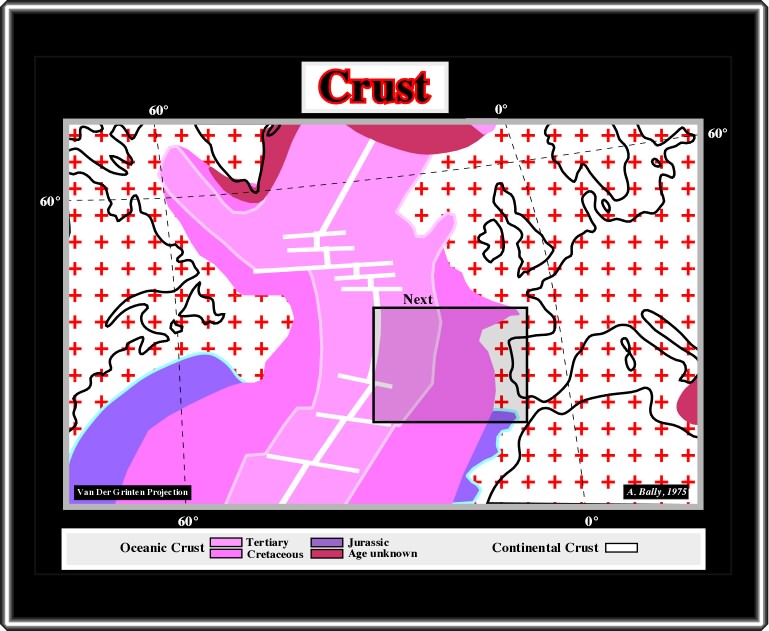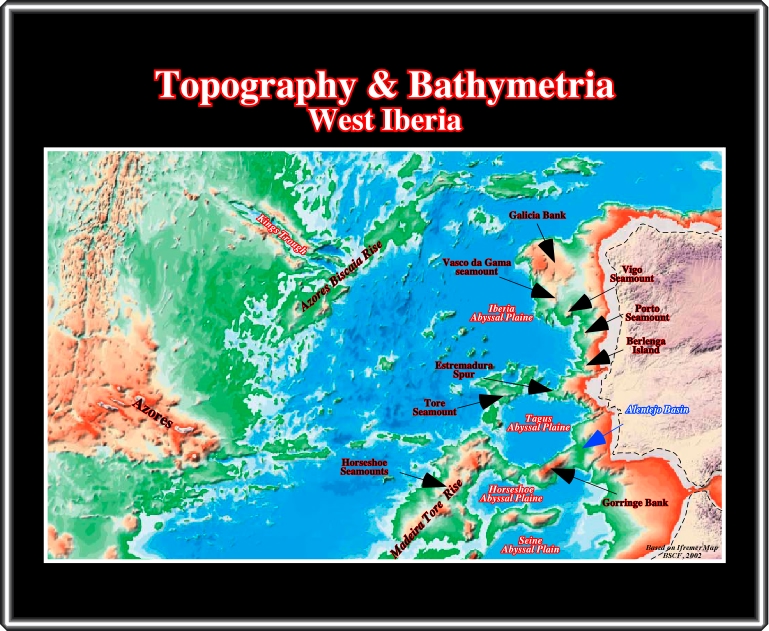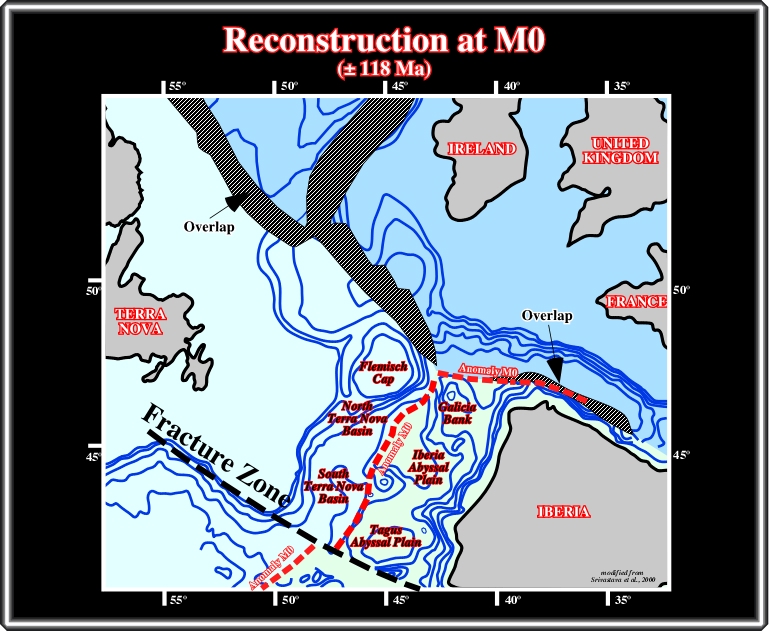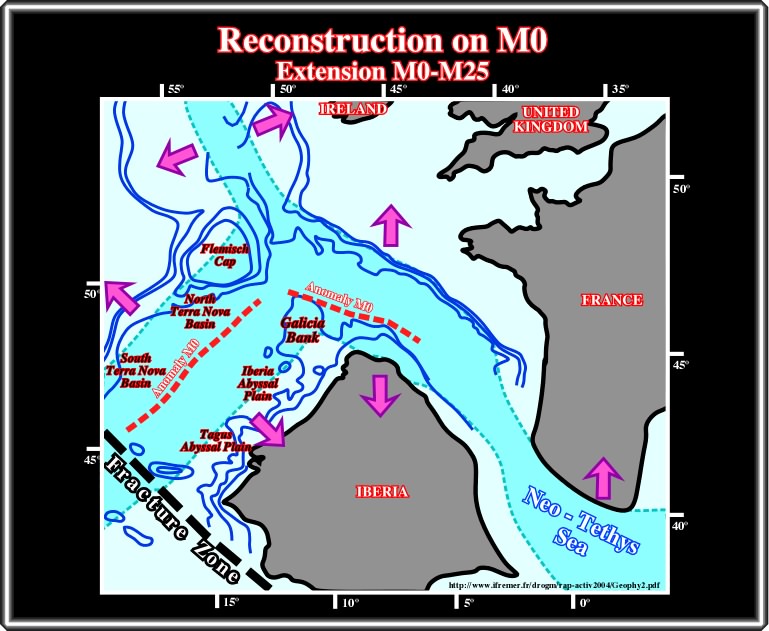

V- Offshore Iberia-Newfoundland
Before some of you ask me where are the SDRs in offshore of Iberian Peninsula, I would like to review this particular area, which some you know much better than me. The geological setting of this area (deep offshore Newfoundland and Iberia) is characterized by the fact that the COB, that is to say, the continental oceanic boundary is quite anomalous in relation to the COB in North Africa and offshore USA, where SDRs are well known as we saw previously.

On this schematic map, one can already notice the offshore Newfoundland and Iberia seems to be bounded by some kind of tectonic accident. Indeed, in relation to the others offshore Atlantic areas, the age of the distal oceanic crust (continentward) is different but also the morphology of the sea floor.

Actually, in the offshore, and particularly in Iberia side, from North to South, it is easy to recognize several bathymetric anomalies: (i) Galicia Bank, (ii) Vasco da Gama - Vigo - Porto seamount, (iii) Iberia abyssal plain, (iv) Estremadura Spur, (v) Tore seamount, (vi) Tagus abyssal plain, (vii) Gorringe Bank, (viii) Horseshoe abyssal plain and (ix) Madeira Tore Rise. Similarly, the Mid-Oceanic ridge, Azores islands, Azores Biscaia rise and Kings through are also easily recognized. On the other hand, as illustrated next, it is important to notice that the bathymetry of Iberia offshore fits quite well with the bathymetry of Newfoundland offshore.

A reconstruction at the magnetic anomaly M0 (see later), around 118 Ma, strongly suggest that at the onset of the sea-floor spreading, Galicia Bank was adjacent to Flemisch Cap. The Iberia and Tagus Abyssal Plains seems also to match with the North and South Terra Nova basins. A major fracture zone existed already between south Newfoundland and south Iberia. A triple point, northward of Flemisch Cap and Galicia bank could be predicted.

The extension between M0 and M25 (see later) shows the lithospheric plate movements and strongly emphasized the geological particularities of Newfoundland and West Iberia offshores when compared with the conventional Atlantic offshores. Notice that in north Iberia, the Neo-Tethys Sea and a triple point between Galicia Bank and Flemisch Cap in which SDRs are likely as show next.
to continue press
next
Send E-mail to carloscramez@gmail.com or to carlos.cramez@bluewin.ch with questions or comments about this conference. Copyright © 2006 CCramez Last modification: August, 2014